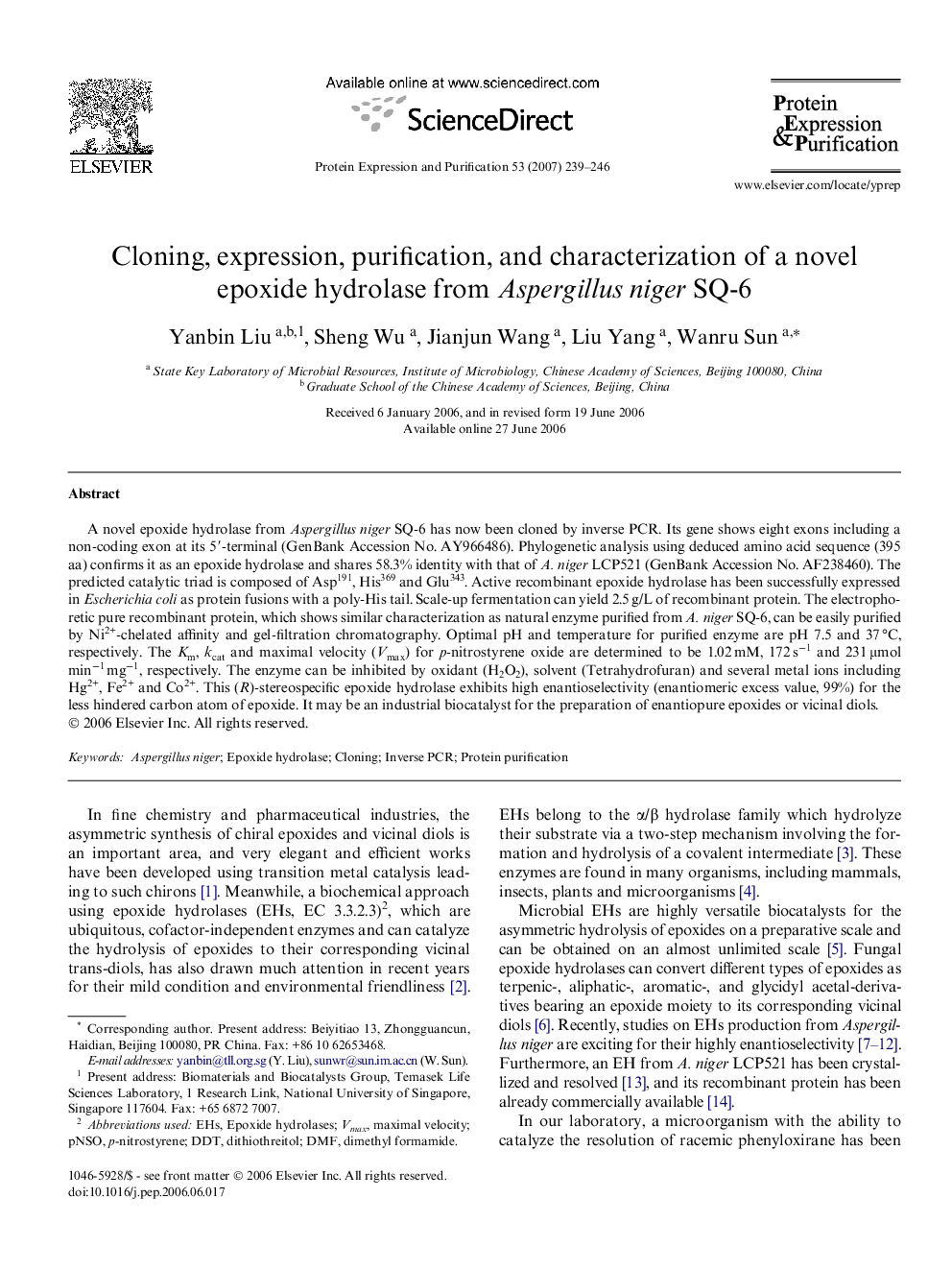| Article ID | Journal | Published Year | Pages | File Type |
|---|---|---|---|---|
| 10843457 | Protein Expression and Purification | 2007 | 8 Pages |
Abstract
A novel epoxide hydrolase from Aspergillus niger SQ-6 has now been cloned by inverse PCR. Its gene shows eight exons including a non-coding exon at its 5â²-terminal (GenBank Accession No. AY966486). Phylogenetic analysis using deduced amino acid sequence (395 aa) confirms it as an epoxide hydrolase and shares 58.3% identity with that of A. niger LCP521 (GenBank Accession No. AF238460). The predicted catalytic triad is composed of Asp191, His369 and Glu343. Active recombinant epoxide hydrolase has been successfully expressed in Escherichia coli as protein fusions with a poly-His tail. Scale-up fermentation can yield 2.5 g/L of recombinant protein. The electrophoretic pure recombinant protein, which shows similar characterization as natural enzyme purified from A. niger SQ-6, can be easily purified by Ni2+-chelated affinity and gel-filtration chromatography. Optimal pH and temperature for purified enzyme are pH 7.5 and 37 °C, respectively. The Km, kcat and maximal velocity (Vmax) for p-nitrostyrene oxide are determined to be 1.02 mM, 172 sâ1 and 231 μmol minâ1 mgâ1, respectively. The enzyme can be inhibited by oxidant (H2O2), solvent (Tetrahydrofuran) and several metal ions including Hg2+, Fe2+ and Co2+. This (R)-stereospecific epoxide hydrolase exhibits high enantioselectivity (enantiomeric excess value, 99%) for the less hindered carbon atom of epoxide. It may be an industrial biocatalyst for the preparation of enantiopure epoxides or vicinal diols.
Related Topics
Life Sciences
Biochemistry, Genetics and Molecular Biology
Biochemistry
Authors
Yanbin Liu, Sheng Wu, Jianjun Wang, Liu Yang, Wanru Sun,
